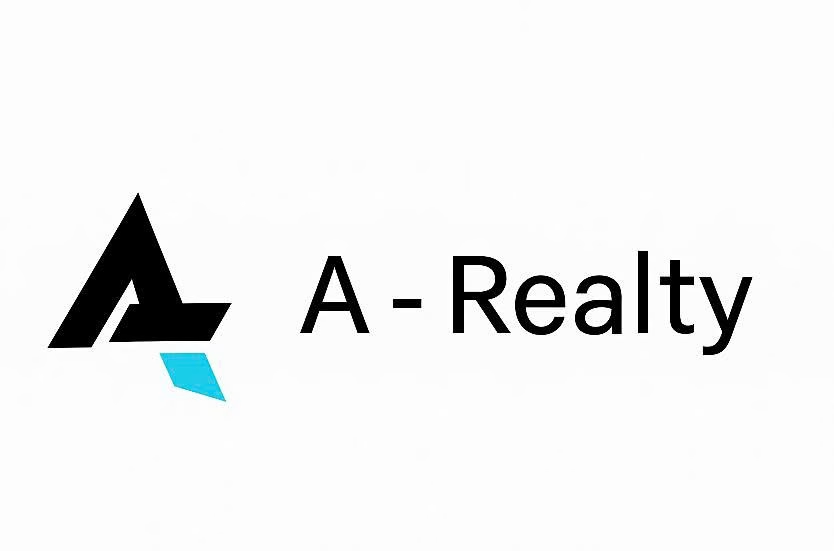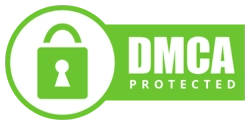Understanding tenant responsibility for repairs Japan is not merely an optional step. It is a legal requirement stipulated by the Lease and Land Act. Understanding this is crucial for securing the return of your security deposit (shikikin). This comprehensive guide helps foreign tenants by providing the clarity needed to effectively manage maintenance and repairs. It is essential while renting an apartment for rent Japan. Knowing your repair obligations helps you avoid unexpected costs. It also helps maintain a positive relationship with your landlord. Additionally, it ensures a smoother move-out inspection process.
Defining Tenant Responsibility Japan
Clear, established principles govern the relationship between tenants and landlords in Japan The most significant principle defining tenant responsibility for repairs Japan is the concept of Genjyo Kaifuku (原状回復), or Restoration to Original Condition.
Understanding Genjyo Kaifuku and its Implications
Genjyo Kaifuku mandates that tenants return the property in the state they originally received it. Normal wear and tear (tsūjō sonmō) does not count. Therefore, tenants are definitively responsible for any damages they cause through negligence or intentional acts. They are also responsible for damages from non-standard use of the property.
- Negligence Examples: Failure to ventilate the unit leads to severe mold growth on walls and ceilings. Not reporting a slow water leak can cause major structural damage. Leaving uncleaned stains on carpets makes them impossible to remove through standard cleaning.
- Intentional Acts Examples: Installing unapproved fixtures that damage the walls or ceilings. Making unauthorized alterations to the property’s electrical systems. Causing large, significant holes in the drywall or doors.
Distinguishing Tenant vs. Landlord Responsibility
Japanese law clearly differentiates between damages caused by the tenant and those arising from the natural aging of the property. This distinction is vital for foreign tenants seeking fair treatment upon moving out.
- Tenant Responsibilities (Damages to Repair): Repair costs always arise directly from the tenant’s actions. Key areas include any non-standard use of the unit. Tenants are responsible for damage to fixtures and fittings if they could have avoided it.
- Examples of Avoidable Damage: Cigarette burns on flooring or wallpaper. Deep scratches can occur on wooden floors from dragging furniture without protective pads. There can also be damage to sanitary equipment, such as cracking a sink or toilet bowl.
- Landlord Responsibilities (Tsūjō Sonmō): The landlord is legally responsible for costs related to normal wear and tear (tsūjō sonmō). They are also responsible for costs related to property aging. These are damages that occur inevitably over time, even with proper usage.
- Examples of Landlord Responsibility: Fading of wallpaper or tatami mats occurs due to sunlight exposure. Minor scratches on the floor result from ordinary walking or moving light furniture. Fixed utility equipment, like the air conditioning unit or water heater, may fail due to old age.
Understanding these clear delineations is crucial. It ensures tenants in rentals in Tokyo Japan are not unfairly charged for costs. These costs should legally be borne by the landlord or management company.

The 7-Step Protocol for Reporting Damage
Prompt and correct reporting is essential for tenants. It helps fulfill their responsibilities. It also prevents minor issues from escalating into major financial liabilities.
Step 1: Immediate Action and Contact Prioritization
In Japan, the hierarchy of contact is paramount. Tenants should never contact the landlord (oya-san) first, unless explicitly instructed to do so in the lease agreement.
- Primary Contact: The Property Management Company (Kanri Gaisha – 管理会社) is the designated point of contact for daily maintenance. They also handle repair issues. The lease agreement (chintai keiyakusho) stipulates their contact details, including the emergency number.
- Urgency Assessment: Use the telephone for emergencies, such as severe water leaks, gas issues, or total power failure. Use email for non-urgent reports, such as a slow faucet drip or a minor crack.
Step 2: Comprehensive Documentation
You must meticulously document the situation before initiating contact to establish the context of the damage. This documentation serves as undeniable evidence for any subsequent insurance claim or financial dispute.
- Visual Evidence: Capture high-resolution photographs and, where possible, video evidence. The visual evidence must include close-up shots of the damage. It must also include wide-angle shots showing the damage’s location within the room.
- Written Record: Note the exact date and time the damage was first observed. If a sudden event caused the damage, describe it neutrally and factually. For example, say “a ceramic mug dropped” and “it caused a crack in the tile.”
Step 3: Formal Written Communication
Even if you make initial contact by phone, you must immediately follow up with a formal written record, typically an email. This creates the indispensable paper trail required for legal and administrative purposes.
- Email Structure: The email must be professional and include all necessary identifying information: your name, apartment number, and contact details. The body should clearly state the date of the damage. It should also mention the location within the property. Provide a concise description of the issue.
- Call to Action: The email must conclude with a clear request for the next steps. Specifically, it should ask the management company to dispatch an authorized repair person (shūri-gyōsha – 修理業者). This person needs to inspect the damage (tenken – 点検).
Step 4: The Role of Tenant Liability Insurance
Most foreigners renting an apartment for rent Japan are required to purchase comprehensive Tenant Liability Insurance (Kasai Hoken – 火災保険). This policy is not merely for fire, but typically includes coverage for tenant liability to the landlord (shakunin baishō sekinin).
- Coverage Activation: If the damage falls under tenant responsibility due to accident (e.g., accidentally breaking a window, or water damage from an overflowing tub), the tenant’s insurance policy should be the primary funding source for the repair.
- Procedure: Tenants must first report the damage to the management company. Then, they should promptly contact their insurance provider to initiate a claim. They must use the documentation gathered in Step 2.
Step 5: Cooperation and Avoiding Unauthorized Repairs
A core tenet of tenant responsibility Japan is the absolute prohibition of unauthorized repairs.
- Cooperation: Tenants must be available to coordinate schedules with the Kanri Gaisha and the repair technicians. The landlord may consider a tenant’s refusal to allow inspection as a breach of the lease agreement.
- The Veto: Under no circumstances should a tenant attempt to fix the damage themselves or hire their own contractor. Doing so voids the landlord’s warranty on the fixture. It may also make the tenant liable for any subsequent, higher repair costs.A professional designated by the landlord or the management company must always execute the repairs.
Step 6: Negotiation and The Principle of Depreciation
The tenant is responsible for the cost. Negotiation is crucial based on the principle of depreciation. This is especially true in high-cost areas like rentals in Tokyo Japan.
- Depreciation Logic: Tenants do not pay the full cost of replacing an old item. Landlords or management companies should calculate the cost based on the current depreciated value of the damaged item. For example, Japan often considers the official useful life of wallpaper to be six years. If the wallpaper is eight years old, the tenant’s financial responsibility for its replacement cost should be minimal or zero.
- Challenge Excessive Fees: Tenants must utilize the MLIT guidelines. They should challenge any invoices demanding 100% replacement cost for items that have clearly aged. Examples of such items include old carpet, outdated fixtures, or worn-out appliances.
Step 7: Archiving the Full Record
The responsible party does not complete the repair process until they archive the records. They must securely store all correspondence, repair invoices, insurance claims, and communication logs. This should continue until the final move-out inspection (taikyo) is complete. The deposit (shikikin) must also be settled.

Legal Precedents and Financial Protection
The most authoritative source for defining responsibilities is the official set of guidelines. These guidelines are issued by the Ministry of Land, Infrastructure, Transport and Tourism (MLIT). These guidelines are used by Japanese courts to mediate disputes over Genjyo Kaifuku.
The MLIT Guidelines and Financial Limits
The MLIT guidelines reinforce the concept of tsūjō sonmō, preventing landlords from charging tenants for repairs necessitated by normal aging.
- Tenant Obligations: The tenant’s financial obligation is strictly limited to restoring damage beyond normal wear and tear. This includes damage to fixtures and fittings that are clearly a result of the tenant’s misuse.
- Landlord Obligations: The landlord must cover all costs associated with standard maintenance and replacement due to age. This ensures that the landlord bears the costs of making the property ready for the next tenant. This occurs following the departure of the previous tenant, provided the unit was used normally.
The Financial Advantage of Prompt Reporting
In a positive context, prompt reporting can significantly reduce the tenant’s potential financial burden.
- Mitigation of Damages: Reporting a small leak immediately prevents moisture from causing significant mold damage. This damage could be massive and expensive beneath the floorboards. The tenant could be held liable if they fail to report it due to negligence.
- Clarity on Cause: If a tenant reports a malfunctioning air conditioner immediately, it is easier to prove the failure was due to component fatigue. This is considered a landlord’s cost. It is also easier to prove it was not due to tenant misuse, which would be a tenant’s cost. This clarity is especially beneficial when dealing with complex utility issues in older properties in rentals in Tokyo Japan.

Arealty: Your Partner in Japanese Rental Compliance
Navigating the complexities of tenant responsibility for repairs Japan requires reliable, expert guidance. Arealty is a specialized real estate agency that assists foreign clients. The agency ensures that all aspects of your tenancy strictly adhere to Japanese legal standards. This starts from the initial contract signing and continues to the final move-out inspection.
We provide comprehensive education on your Genjyo Kaifuku obligations, clarifying the often-confusing division between tenant and landlord responsibilities. Our expertise translates into financial security for you, maximizing the return of your shikikin. We stand as an advocate. We ensure that the principles of tsūjō sonmō and depreciation are correctly applied to any repair invoices you receive.
Do not risk your security deposit on assumptions. Contact Arealty today for expert lease review. Gain guidance on your rental responsibilities. This ensures a smooth and compliant tenancy across all rentals in Tokyo Japan.
Conclusion
Mastering tenant responsibility for repairs Japan is a professional requirement for any expatriate. By adhering to the clear, seven-step reporting protocol, tenants can safeguard their rights. Documenting every incident meticulously helps in protecting their financial investments. Understanding the financial limitations imposed by depreciation is also essential. The knowledge of legal concepts such as Genjyo Kaifuku and Tsūjō Sonmō empowers the tenant. This understanding allows them to engage confidently with property management companies and landlords. It ensures a fair and legally compliant tenancy throughout their stay in an apartment for rent Japan.
The certainty derived from professional knowledge provides reassurance to tenants. This allows them to fully utilize and enjoy their leased property. They can do this without undue anxiety over hidden costs.






Leave a Reply